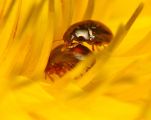Підтримуємо Вільну Україну
 We Support Free Ukraine
We Support Free Ukraine

Biodiversity Map
Taxa

-
Arthropodaphylum
Click to switch
to select orders
and filters > -
Hexapodasubphylum
Click to switch
to select orders
and filters > -
Insectaclass
Click to switch
to select orders
and filters > -
Coleopteraorder
Click to set
as the main taxon
and as a base
← of the left panel > -
Polyphagasuborder
Click to set
as the main taxon
and as a base
← of the left panel > -
Cucujiformiaseries
Click to set
as the main taxon
and as a base
← of the left panel > -
Cucujoideasuperfamily
Click to set
as the main taxon
and as a base
← of the left panel > -
Phalacridaefamily
Click to set
as the main taxon
and as a base
← of the left panel > -
Phalacrinaesubfamily
Click to set
as the main taxon
and as a base
← of the left panel > -
Olibrusgenus
Click to set
as the main taxon
and as a base
← of the left panel >
species:
Olibrus bimaculatus
PL
YES
name status: valid name
BioMap ID: 1018442
taxon code: 3361
taxonomy checked: YES
Data on distribution in Poland

Statistics
- Records: 65
- Publications: 18
- Collections: 3
- Publication authors: 15
- Illustrations (iconography): 1
- Photos (specimen/observation): 1
Taxon description
Gatunek rozpowszechniony niemal w całej Europie, na wschód przez południową Syberię docierający do Kraju Nadmorskiego; notowany poza tym z zachodniej części Afryki Północnej. W Polsce występuje prawdopodobnie na całym obszarze, nie notowany jeszcze z wielu krain. Rośliną żywicielską postaci dojrzałych i larw jest mniszek pospolity — Taraxacum officinale Web. Larwy żerują w koszyczkach kwiatowych; przepoczwarczenie odbywa się w glebie. Postacie dojrzałe przezimowują pod opadłymi liśćmi i wśród mchów przeważnie na pobrzeżach lasów.
Illustrations
... browse
 Olibrus
Olibrusbimaculatus
Photos
... browse
 Olibrus
Olibrusbimaculatus
External data sources
- Ostatnie rekordy
-
1042502
 ×
× Phalacridae: Olibrus bimaculatus, FR, Alpes Maritimes, Opio, 1997, leg. A. Lasoń
Phalacridae: Olibrus bimaculatus, FR, Alpes Maritimes, Opio, 1997, leg. A. Lasoń -
775437
 ⊡
⊡ Phalacridae: Olibrus bimaculatus, PL, Roztocze, Krasnobród, UTM FB50, 1990, leg. L. Borowiec, coll. Uniw. Wrocławski, ZBiTE
Phalacridae: Olibrus bimaculatus, PL, Roztocze, Krasnobród, UTM FB50, 1990, leg. L. Borowiec, coll. Uniw. Wrocławski, ZBiTE -
775436
 ⊡
⊡ Phalacridae: Olibrus bimaculatus, PL, Pojezierze Pomorskie, Białowieża, UTM XV70, 1982, leg. L. Borowiec, coll. Uniw. Wrocławski, ZBiTE
Phalacridae: Olibrus bimaculatus, PL, Pojezierze Pomorskie, Białowieża, UTM XV70, 1982, leg. L. Borowiec, coll. Uniw. Wrocławski, ZBiTE -
775435
 ⊡
⊡ Phalacridae: Olibrus bimaculatus, PL, Roztocze, Biała Góra ad Tomaszów, UTM FA79, 1990, leg. L. Borowiec, coll. Uniw. Wrocławski, ZBiTE
Phalacridae: Olibrus bimaculatus, PL, Roztocze, Biała Góra ad Tomaszów, UTM FA79, 1990, leg. L. Borowiec, coll. Uniw. Wrocławski, ZBiTE -
775434
 ⊡
⊡ Phalacridae: Olibrus bimaculatus, PL, Roztocze, Józefów, UTM FA49, 1990, leg. L. Borowiec, coll. Uniw. Wrocławski, ZBiTE
Phalacridae: Olibrus bimaculatus, PL, Roztocze, Józefów, UTM FA49, 1990, leg. L. Borowiec, coll. Uniw. Wrocławski, ZBiTE -
775433
 ×
× Phalacridae: Olibrus bimaculatus, PL, Roztocze, Kąty Drugie ad Zamość, 1982, leg. L. Borowiec, coll. Uniw. Wrocławski, ZBiTE
Phalacridae: Olibrus bimaculatus, PL, Roztocze, Kąty Drugie ad Zamość, 1982, leg. L. Borowiec, coll. Uniw. Wrocławski, ZBiTE -
775432
 ⊡
⊡ Phalacridae: Olibrus bimaculatus, PL, Roztocze, Biała Góra ad Tomaszów, UTM FA79, 1982, leg. L. Borowiec, coll. Uniw. Wrocławski, ZBiTE
Phalacridae: Olibrus bimaculatus, PL, Roztocze, Biała Góra ad Tomaszów, UTM FA79, 1982, leg. L. Borowiec, coll. Uniw. Wrocławski, ZBiTE -
734293
 ×
× Phalacridae: Olibrus bimaculatus, PL (Borowiec 1991d)
Phalacridae: Olibrus bimaculatus, PL (Borowiec 1991d) -
620286
 ⊡
⊡ Phalacridae: Olibrus bimaculatus, PL, Nizina Mazowiecka, Warszawa, Ursynów, UTM EC07, 2011, leg. M.W. Kozłowski
Phalacridae: Olibrus bimaculatus, PL, Nizina Mazowiecka, Warszawa, Ursynów, UTM EC07, 2011, leg. M.W. Kozłowski -
504641
 ⊡
⊡ Phalacridae: Olibrus bimaculatus, PL, Podlasie, Białystok, UTM FD48, 1996, leg. A. Lasoń
Phalacridae: Olibrus bimaculatus, PL, Podlasie, Białystok, UTM FD48, 1996, leg. A. Lasoń - ... more
- Powiązane publikacje
-
Borowiec L. 1991d. Nowe i rzadkie dla Polski gatunki Phalacridae (Coleoptera). Wiad. Entomol., 10(2):75-79.
 full text
full text Show records
Show records -
Burakowski B., Mroczkowski M., Stefańska J. 1986a. Chrząszcze – Coleoptera. Cucujoidea, część 1. Katalog Fauny Polski, XXIII, 12, Warszawa.
 Show records
Show records -
Starzyk J.R. 1971c. Wstępne badania nad ekologią populacji antofilnych Cerambycidae (Coleoptera) w Tatrzańskim Parku Narodowym. Acta Agr. Silv., S. S., 11:47-71.
 Show records
Show records -
Horion A. 1960a. Faunistik der mitteleuropäischen Käfer. Band VII: Clavicornia 1. Teil (Sphaeritidae bis Phalacridae). Überlingen-Bodensee. VIII + 346 pp.
 Show records
Show records -
Horion A. 1951. Verzeichnis der Käfer Mitteleuropas (Deutschland, Österreich, Tschechoslovakei) mit kurzen faunistischen Angaben. 1-2. Stuttgart. X + 536 pp.
 Show records
Show records - ... more
- Powiązane zbiory
-
ISEZ PAN
 Show records
Show records -
Uniw. Wrocławski, ZBiTE
 Show records
Show records -
Lasoń A.
 Show records
Show records





